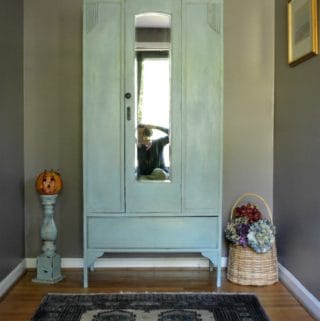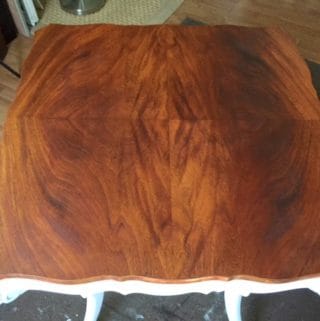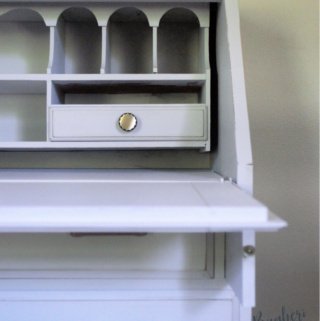Quick update on the new email subscription link. The emails now arrive into your “Promotions” tab in gmail and are easily buried under a bunch of well, promotions! If you wish to move the emails back into your “Primary” tab, simply locate the email and drag and drop it into your Primary tab. They will then be delivered into your Primary tab in the future. Thanks!
![]()

OK, guys. You are in for a real treat (she says sarcastically). This is kind of a “before and after” series except that my face is what is going to be transformed and it is definitely not a “do it yourself” project!
I have had 8 MOHS surgeries to date. MOHS surgery is what is done by skilled doctors to remove skin cancer. In one appointment, the doctor removes the cancer spot and tests the borders to make sure it is all gone. If not, the doctor goes in again and takes out a bit more and tests it. They keep at it until all the cancerous cells are removed. This is the best way to remove skin cancers (especially from your face) as they only remove exactly what is needed and avoid cutting a huge chunk out of your skin.
After a lot of trial and error with other dermatologists, I miraculously found Dr. Yu from The Dermatology Center in Bethesda. He is excellent and I rely on his expertise and advice. He is a dermatologist and MOHS surgeon and recommends that in order to prevent future skin cancers and horrible surgeries, I receive a treatment called Photodynamic Therapy (PDT).
from The American Cancer Society…
Photodynamic therapy (PDT) is a treatment that uses special drugs, called photosensitizing agents, along with light to kill cancer cells. The drugs only work after they have been activated or “turned on” by certain kinds of light. PDT may also be called photoradiation therapy, phototherapy, or photochemotherapy.
Depending on the part of the body being treated, the photosensitizing agent is either put into the bloodstream through a vein or put on the skin. Over a certain amount of time the drug is absorbed by the cancer cells. Then light is applied to the area to be treated. The light causes the drug to react with oxygen, which forms a chemical that kills the cells. PDT might also help by destroying the blood vessels that feed the cancer cells and by alerting the immune system to attack the cancer.
The period of time between when the drug is given and when the light is applied is called the drug-to-light interval. It can be anywhere from a couple of hours to a couple of days, depending on the drug used.
The reason I’m sharing is because this treatment is also used as a cosmetic procedure to help with sun damaged skin, acne scars, dark spots, etc. For anyone considering it for cosmetic or as in my case, to treat pre-cancerous spots, it may be helpful knowledge. Honestly, the photos are a bit hard to share!
This is the second time I have had this procedure and I knew what to expect. When I arrive, the esthetician first performs microdermabrasion. This is akin to a mini vacuum being used on the face. She swipes it in careful lines across my face but it doesn’t hurt at all. She then applies the medication and honestly, that stings. After five minutes it subsides but it makes my skin very sensitive and red. The medication sits on my face for an hour and a half and then I am taken to a room and placed under the light. First they apply small pads over the eyes for protection and then the light is turned on over the face. It does really sting and burn but it is not unbearable. The light is on for exactly 16 minutes and 40 seconds. Afterward, my skin feels hot and flushed (not a nice feeling at all). I need to avoid the sunlight for a few days as my skin is still very sensitive to light. I feel this is the worst part because I hate being stuck inside – especially right before the holidays with all that needs to be done.
Now for the scary pics!
I had it performed yesterday (the 13th) and last night was very uncomfortable. I ended up taking 2 Aleve pills and applying vaseline all over my face. It felt like a really bad sun burn with my skin very hot and sore. This morning it is definitely improving.
I will keep you posted on the progress of my face’s “before and after” and if you can stomach it, I will add a small pic at the end of each post for a week for you to see. I am anticipating looking like Charlize Theron or even Kim Kardashian at the end. Fingers crossed lol! But seriously, wear your sunscreen! I am like a crazy woman with my kids, following them around with a bottle of it at all times and I am the only mom that forces her softball player to wear a hat but I know that they will thank me when they are older and their skin is still flawless!









Had the blue light therapy done at my dermatologist office. Done on my hands and arms. 2 procedures, painful, but looks like it is getting rid of the pre-cancerous spots! Thanks for sharing!
Hi Kim, Yes, it is definitely not pleasant but much better than having them cut out with stitches on my face I’m so glad you had it done and are doing well!
I’m so glad you had it done and are doing well!
Thanks!
Wow I really feel for you Suzanne – I’ve had cancerous cells on my skin, but on my legs that was bad, the cancer was eating into my bone, but when it’s on your face obviously it is harder – well almost impossible to hide – I really feel for you and hope tomorrow you will not be so uncomfortable and in pain and that very very soon all will be well with you – good luck with your treatment and I shall be thinking of you
Thanks, Denise. You also understand how scary it is and I’m sorry for what you have been through. I am so glad that this generation knows all the risks of the sun and that my kids are well protected. I can’t believe how we used to tan ourselves!
Kudos to you for your courage in sharing this important information with us!
Thank you, Carol. I honestly was a little hesitant to share these very personal photos but I do hope they help educate others on the procedure (and to stay out of the sun!)
Suzanne you are so brave, and thank you for sharing. I wish the best for you. This is a great service that you are sharing, and should help a lot of people. Hang in there and keep us all up to date.
Might I suggest using pure 100% Aloe on your face. This is what I did when I had radiation done for breast cancer. You apply it every day or as needed. It helps with the healing process and keeps your skin healthy. Ask your doctor, they should know.
You look like you are healing well. Good luck!
Thank you for sharing. I am so bad about not using sun screen when I am working in the yard.
Your very brave. Gave me a lot to think about.
Thank you so much for sharing. Your courage to share will help a lot of other people.
Hi Suzanne,
I hope you’re feeling a little more comfortable today. It looks gruelling!
Being a red-haired Australian, who lived my childhood 100 yards from the beach, in the halcyon pre-sunblock 1960s, you can imagine I have the same problems! I’ve had a few skin cancers on my face and arm, but haven’t used this method. I’ve had two excisions, and am always keen to avoid any further surgery.
I use a cream called Aldara (Imiquimod) which is brilliant. Your GP can prescribe it. You just apply a very tiny amount to any worrying spot (not all over your face), 5 nights a week, over a period of weeks. The spot will flare up, ulcerate, then heal. Depending on how large/deep the skin cancer is it may leave no scar at all, or just a light-coloured patch. I use this as my first attack. Mostly it works brilliantly, but there has been one occasion when the BCC didn’t respond and required excision. It only works on BCCs.
Another red-haired friend used a cream called Efudix (Fluorouracil), which she applied all over her face, then waited for the effect, which was very similar to your treatment. There was no need for lights of any kind, she applied it herself and her skin was much improved.
Just thought I’d share this information, as we should all know surgery isn’t the only way to handle this sun damaged skin. Of course it is necessary in some cases, and that is undeniable, but give the passive treatments a go first. It’s prudent to remember that excision work will make doctors a lot more money than prescribing a cream. I’m an RN, married to a doctor, and have worked alongside skin doctors. We like to think everyone is only thinking of our situation, but, sadly, that isn’t always the case. I’ve also found (from my own experience), that using a plastic surgeon to excise skin cancers, will usually give a much better aesthetic effect than using a dermatologist. They will certainly be looking at taking a sufficient margin around the cancer, but their suturing skills are finer and the end result will be less noticeable.
That’s my contribution! I hope this helps someone. Good luck Suzanne.
I hope this helps someone. Good luck Suzanne.
Cheers, Elisabeth.
I’m so impressed w your courage and generosity! It’s never easy to put ourselves out there if we feel ugly. You are providing a much needed service to do many. I knew nothing of this. Thank you for hrlping educate me and many more! Can’t wait to see how it all rolls out. Another soothing item is colloidal oatmeal. Aveeno makes a soak. Good luck!
Thanks, Jauquetta. I definitely am not looking my best and plan on scaring more people today while out shopping Thanks for the oatmeal tip – I shall try it!
Thanks for the oatmeal tip – I shall try it!